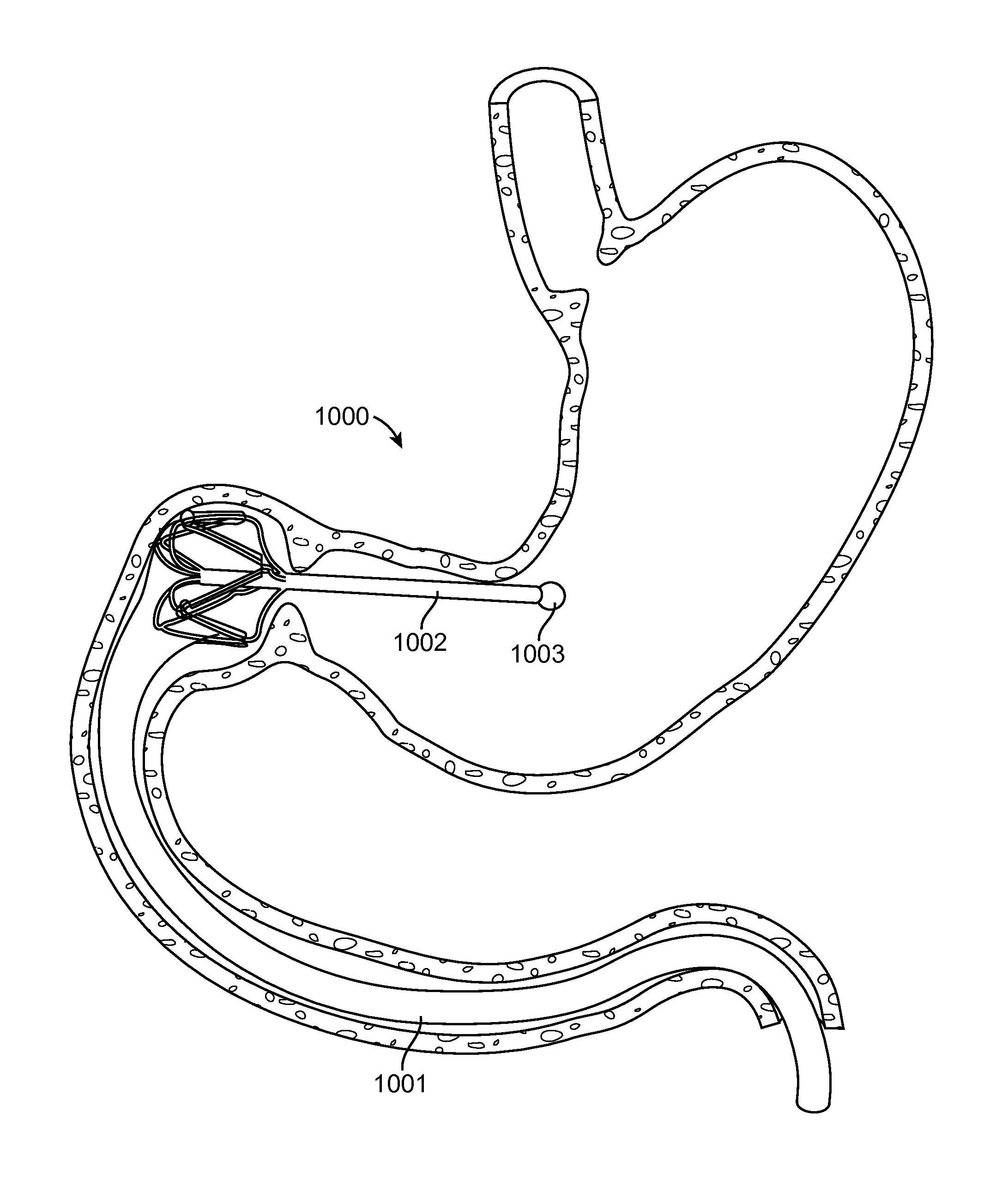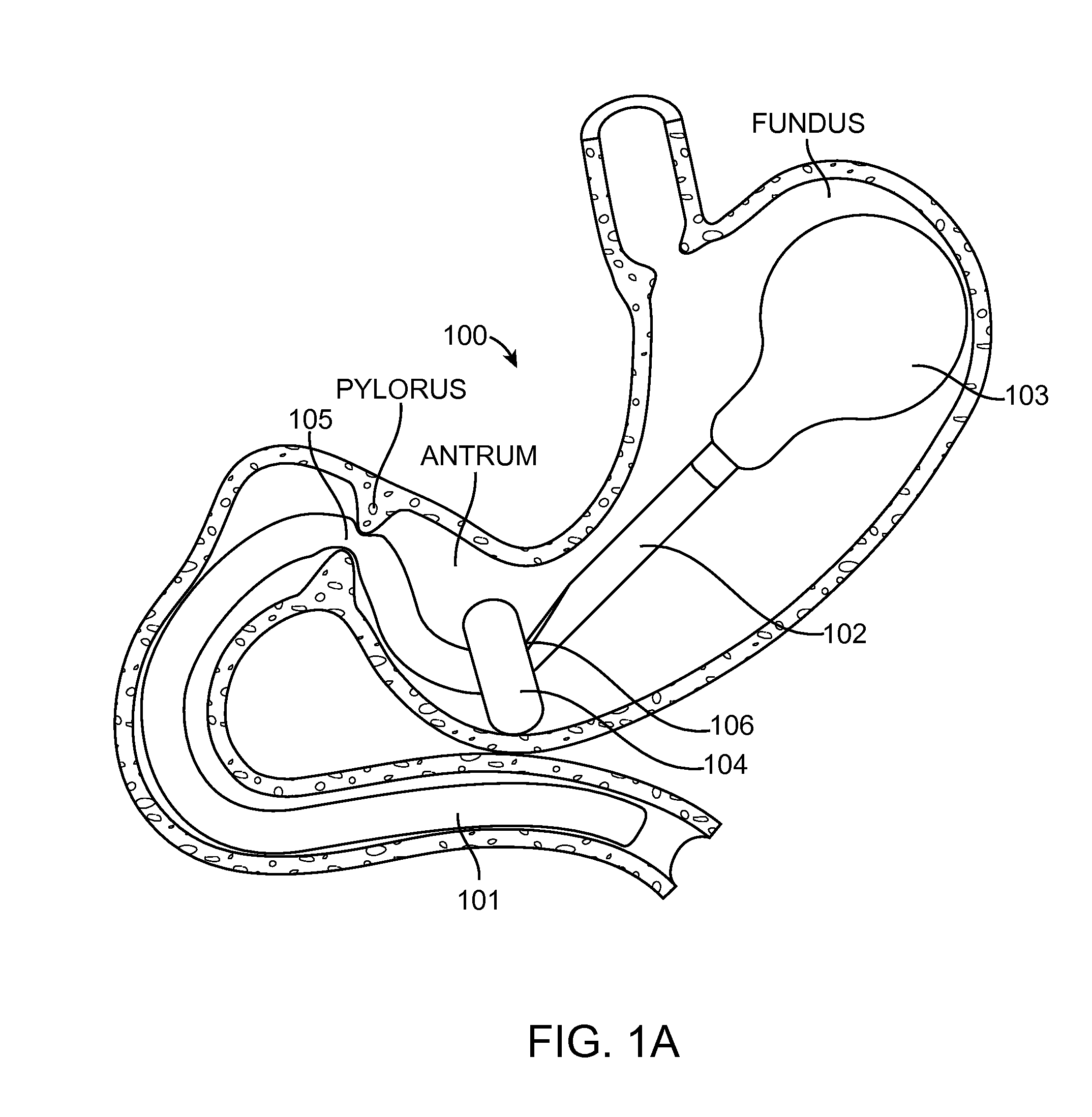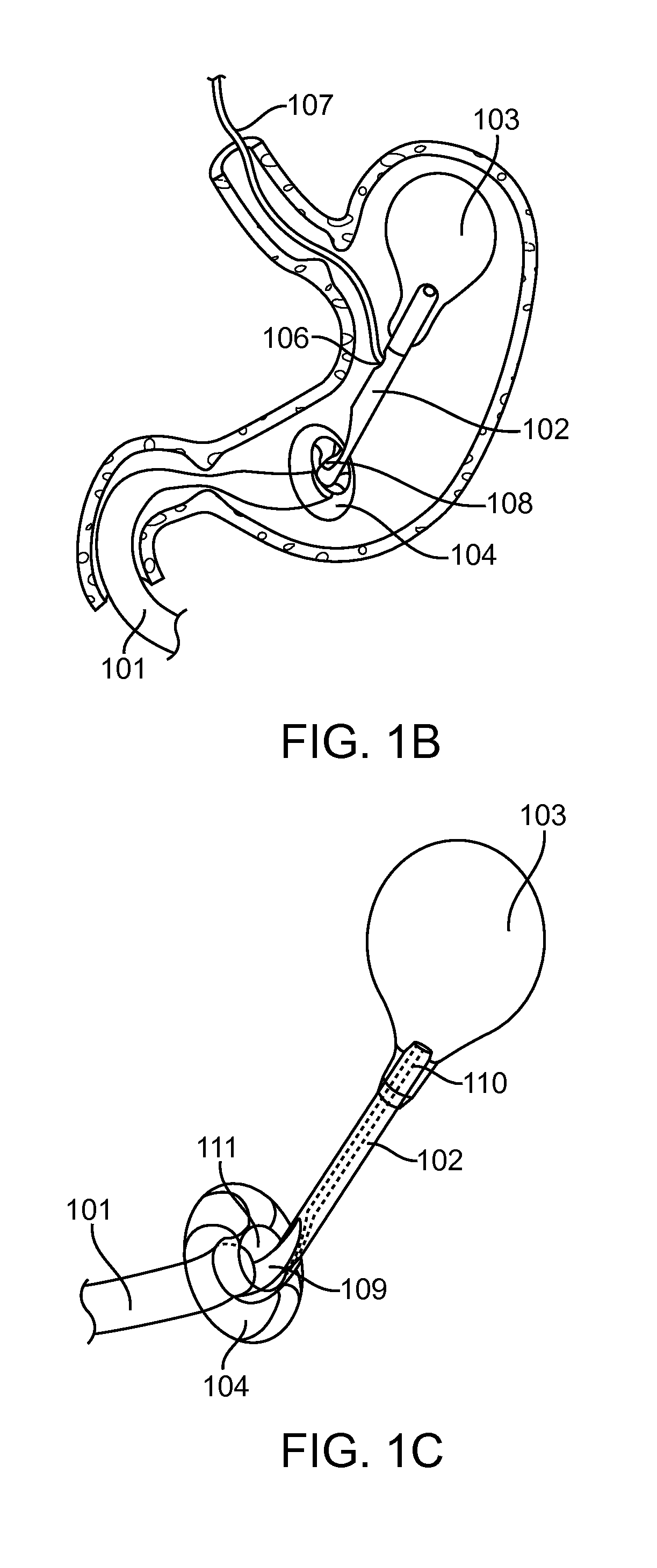Intragastric implant devices
a technology of intragastric implants and implants, which is applied in the field of medical devices, systems and methods, can solve the problems of permanent irreversible changes in the patient's digestive tract, serious and potentially life-threatening, and carry a substantial risk of surgical complications or death, and achieve the effect of reducing intestinal conta
- Summary
- Abstract
- Description
- Claims
- Application Information
AI Technical Summary
Benefits of technology
Problems solved by technology
Method used
Image
Examples
Embodiment Construction
[0062]The present invention generally provides improved medical devices, system and methods for treatment of patients. As described herein, the term “proximal” means nearest the point of origin, within the context of the flow of food particles through the digestive system, and “distal” means situated farthest from the point of origin. For example, in reference to the stomach, a “proximal” portion of the stomach refers to the portion nearest the esophagus where the flow of food into the stomach originates, whereas the “distal” portion of the stomach refers to the portion nearest the pyloric valve where the flow of food particles leaves the stomach. Similarly, the “proximal” portion of the duodenum refers to the portion nearest the pyloric valve, from which the flow of food particles entering the duodenum originates.
[0063]Exemplary embodiments of the present invention can be used to anchor a treatment device in a stomach of a patient in treating metabolic related disorders such as dia...
PUM
 Login to View More
Login to View More Abstract
Description
Claims
Application Information
 Login to View More
Login to View More - R&D
- Intellectual Property
- Life Sciences
- Materials
- Tech Scout
- Unparalleled Data Quality
- Higher Quality Content
- 60% Fewer Hallucinations
Browse by: Latest US Patents, China's latest patents, Technical Efficacy Thesaurus, Application Domain, Technology Topic, Popular Technical Reports.
© 2025 PatSnap. All rights reserved.Legal|Privacy policy|Modern Slavery Act Transparency Statement|Sitemap|About US| Contact US: help@patsnap.com



